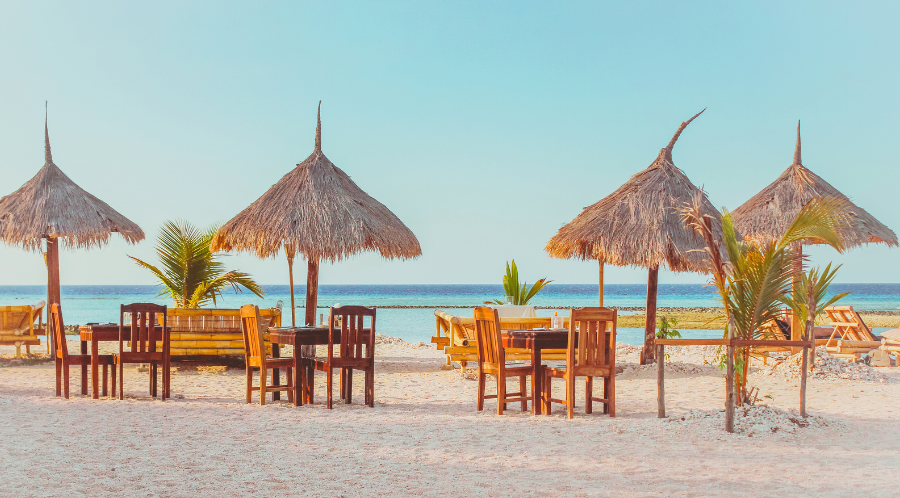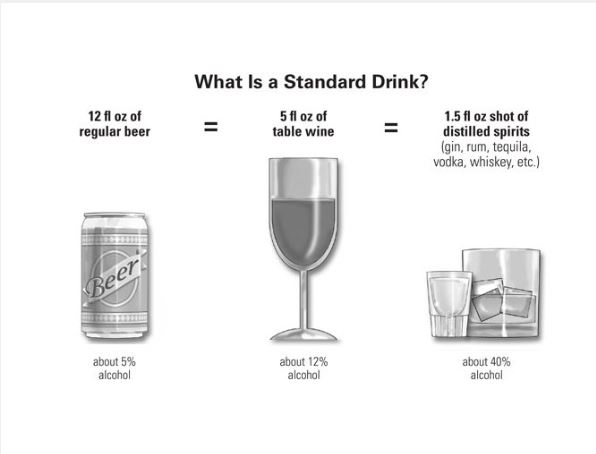Do I Drink Too Much?

Do I drink too much, even in the context of a Bahamian vacation?
I used to live in The Bahamas, where drinking in the morning is called (somewhat facetiously) “Bahamian breakfast.” It was not shocking to see someone walking on the Government Dock at 7:00 a.m. with a beer in one hand and a power tool in the other. No one looked askance when a tipsy tourist slurred, “That’s my song,” and climbed atop the Yacht Club bar for an impromptu dance du jour. Neighbors extracted golf carts from the mangroves when a tipsy driver took a corner too fast. They ferried inebriated bar patrons safely home and offered preventative hangover remedies (spicy, greasy food and two aspirin before the inevitable pass out). There is a reason the colloquial “tings’ happen” is a Bahamian catchphrase.
Do I Drink Too Much?
The Bahamas provides extreme examples, but “social and cultural contexts influence alcohol use and misuse,” to quote the National Institutes of Health (NIH). For example, one might be more inclined to drink alcohol in the morning if it was considered acceptable (or humorous) among peers. The NIH describes the primary influencers of alcohol consumption in the U.S. as follows:
- Individual – includes race, ethnicity, age, socio-economic and immigration status. For example, 68% of white adults drink alcohol, the highest consumption rate among racial and ethnic groups.
- Microsystem – is family environment, parental alcohol use, parental monitoring, school and work peer networks, and peer support. Genes are responsible for about half the risk of developing an alcohol use disorder (AUD), but the environment and the interactions between genes and the environment are also factors.
- Community – comprises norms and attitudes regarding alcohol use, including cultural and gender norms. Community includes neighborhood characteristics and opportunities for alcohol purchasing and consumption.
- Macro or Policy Level – encompasses strategy and laws related to alcohol consumption, advertisements, and marketing. In the U.S., open container laws vary state by state, but most do not allow open containers of alcohol on city thoroughfares (or docks). Advertising of alcoholic beverages and products is regulated under the Federal Alcohol Administration Act.
Let’s put this into context using our example of The Bahamas. Suppose you are a wealthy, white American male with a family history of alcoholism arriving on the island with a group of hard-drinking fishermen pals for a weekend. In that case, you will likely drink too much. Move to the islands, and you may be at high risk for developing an alcohol use disorder.
When Drinking Too Much Becomes a Substance Use Disorder
This brings us to the crux of the matter: how much is too much alcohol, no matter who or where you are? You may be surprised to hear what the National Institute on Alcohol and Alcoholism (NIAAA) defines as “heavy drinking.” For women, it is four or more drinks on a given day or eight or more drinks per week. For men, heavy drinking is five or more drinks on a given day or 15 or more per week. You may also be surprised by how they define a “standard drink.”
We Highly Recommend the NIAAA Rethinking Drinking Website
“If you ask yourself, ‘Do I drink too much?’ you are likely drinking too much. Discomfort relating to your alcohol consumption is a red flag, no matter the context. Do you wake up wondering whether you offended someone at the previous evening’s event? Or become defensive when a loved one comments on your relationship with alcohol? Perhaps you are missing milestones or work appointments and have stopped reading at bedtime. Small pieces of who you are have begun to be preempted by alcohol.”
Rae Green, JD, LPC, CAADC, Sanford Behavioral Health Founder
Drinking Problem? How Do I Know If I Have One?
(Click to Take the Quiz)
Prevalence of Alcohol
Understandably, folks in The Bahamas on vacation might overindulge in both conch fritters and alcohol. It is as much a part of the cultural and social influence as the Junkanoo. However, in the U.S., the prevalence of alcohol at sporting events, holiday and work gatherings, book clubs, playdates, college parties, and leisure activities makes it difficult to determine whether your drinking habits are habit-forming. A word to the wise – I don’t live in The Bahamas anymore or drink anymore. But after I left, thinking my alcohol use was merely acclimating to the drinking culture, I was told that it was apparent to the islanders that I had a drinking problem. Being first among equals in that culture was a distinction that still gives me a hot wave of embarrassment.
If you or a loved one identify with any warning signs in the quiz above, continued alcohol use can lead to escalation and the inability to choose how your life will progress. Click the link below to call today for information or admissions to a Sanford Behavioral Health addiction treatment program.






